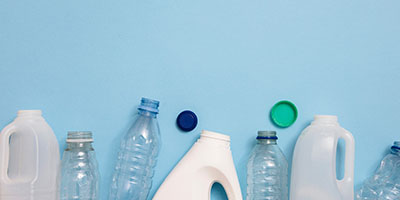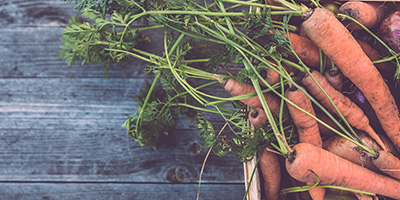15 Ways to Conserve Water in Your Daily Life

How to Conserve Water
Why should we conserve water? There are two obvious answers. Water waste is not only bad for the environment, it’s also bad for your water bill. Finding small ways to save water every day can not only lessen your footprint on the environment, but can also save you money.

“Saving water can also be a big boost for your budget. The price of tap water is expected to rise over the years as communities reinvest in water infrastructure and treatment. In places experiencing water shortages, people who use more water typically pay more. Therefore, reducing water use can significantly improve a household’s finances.”
Greg Kail | American Water Works Association
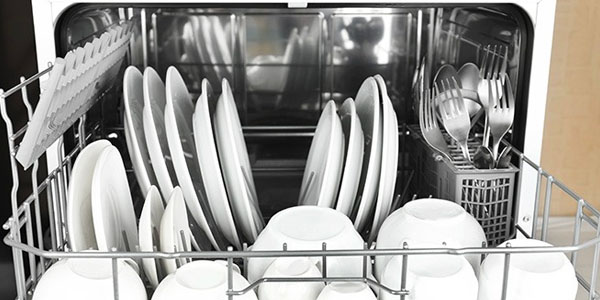
How to Save Water at Home
1. Install Water-Saving Bathroom Fixtures
There are a number of ways to save water in the bathroom without any effort on your part. Dual-flush toilets, for example, allow you to control the amount of water you use each flush. Installing a low-flow showerhead gives you the chance to save water without even changing your habits. When replacing elements in your bathroom, look for low-flow or water-saving options.
Ready to upgrade your bathroom? Learn how to remodel your bathroom from top to bottom.

“For most people, washing and cleaning, watering the lawn, and flushing the toilet are the major culprits [of high water bills]. Focus on these. Install low-flow, dual flush toilets that typically use 1.28 gallons of water or less per flush. That can reduce an average family's water consumption by more than 20%.”
Simon Elstad | Greener Ideal
2. Limit Dishwasher and Washing Machine Usage
About 25% of all home water use is in your laundry room. You can lower your water bill by waiting until you have a full load to run your washing machine. The same principle can be applied to your dishwasher – fewer loads mean less water used. Something else to keep in mind is that most modern dishwashers don’t require dishes be “pre-cleaned” before a cycle. Save some water and precious time by skipping the pre-clean.
If you want a more permanent, effortless solution, you can upgrade these appliances to an energy-efficient model and save water at home without even thinking about it.

“When it comes time to upgrade your washing machine or dishwasher, look for those with the EPA Energy Star label. Energy Star labeled washing machines and dishwashers save both water and energy. It's a simple way to save a lot of water in your home while reducing your water and energy bills.”
Bill Christiansen | Alliance for Water Efficiency
3. Turn the Water Off When Brushing Your Teeth or Shaving
Changing your morning routine can help you lower your water bill as well. Many people leave the water running while either shaving or brushing their teeth. A vast majority of that water ends up wasted down the drain, which can easily amount to 3 gallons of water a day or more. Follow the simple rule of only running the faucet when you need the water.
4. Turn Off the Faucet While Washing Dishes or Preparing Food
While working in the kitchen, if the faucet doesn’t have to be on, turn it off. Fill the sink itself or a plastic basin to wash dishes or rinse fruit and vegetables to limit the amount of water you’re using. The water used for fruits and vegetables can also be reused to water household plants or your garden. Another way to save water in the kitchen is to limit your garbage disposal use and compost your food waste instead.

“Instead of running the faucet constantly when washing dishes, fill the sink with water. This will save you a lot of water. Thaw food in the refrigerator overnight instead of using running water. This is a safer method of thawing food and reduces water waste.”
Bill Christiansen | Alliance for Water Efficiency
5. Take Shorter Showers
While treating yourself to a long, relaxing shower every once in a while is nice, you can save a lot of water by limiting your everyday showers to less than five minutes. If you’re looking to conserve more water and keep your bill low, you can even turn off the water as you lather up, and turn it back on to rinse the soap and shampoo off.
6. Save Water by Preventing Leaks
That slow drip from your bathroom faucet isn’t just annoying - it’s wasteful as well. With small amounts of water running constantly, those drips end up sending a lot of water down your drain. Keeping an eye out for and fixing these leaks early will save you a lot in the long run. Catching leaks early will avoid costly flood damage cleanup if your pipes burst. Make it a point to check your pipes and water fixtures often. And if you have to update any features to fix a leak, look into water-saving models.

“A leaky toilet can be your biggest indoor water waster. Add 12 drops of food coloring into the tank, and if color appears in the bowl one hour later, your toilet is leaking.”
Greg Kail | American Water Works Association
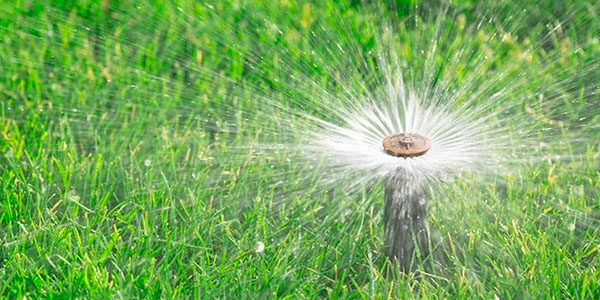
Water Conservation Tips Outside Your Home
7. Clean Your Driveway, Walkways and Steps With a Broom
Outside your home, you can save a lot of water by “dry cleaning” as much as you can. Consider using a broom to clean off your driveway, patio, sidewalk or deck instead of a hose or power washer. When washing your car, fill a bucket with soap and water to clean your car and only use the hose to rinse it off. You can also take your car to a carwash that recycles its water. That will not only lower your water bill, but will also keep the soap from washing into your grass and down the sewer drain.
8. Water Your Lawn Intelligently
It should come as no surprise that watering your lawn and garden accounts for a lot of water use in your home. Water in the morning or evening when it’s cool so less water is lost to evaporation. If you are using sprinklers, adjust them to avoid watering hard surfaces like the roof or driveway. If you’re watering manually with a hose, install a sprayer or other shut-off valve on the end of the hose so water isn’t running constantly and you are only putting water where it needs to go.
9. Install a Rain Barrel
Another great way to save water outdoors is to install a rain barrel for your lawn, garden or indoor plants. Collecting water from the rain not only lowers your water bill, but allows you to repurpose natural water.

“For the lawn, collect rainwater or recycle your greywater at home. Alternatively, do away with the lawn entirely and replace it with artificial grass, or nothing, to conserve water (especially for people in the drought-stricken Northwest U.S).”
Simon Elstad | Greener Ideal
10. Plan Your Garden for Water-Efficiency
Native plants require less watering and will thrive in your yard with less maintenance. Use mulch in your landscaping, especially around your plants. The mulch will not only make it look better, but will hold a lot of moisture, so when you do water your plants, you won’t need quite as much.
If you want to give your green thumb a test, read about other ways to make your garden more sustainable.
11. Avoid Decorative Water Features
While fountains or ponds in your landscaping can add a nice visual touch, it can also waste a lot of water. If you must use a water feature, get one that will recycle water. Placing it in a shady area and turning it off on hot summer days is also good practice to conserve water.
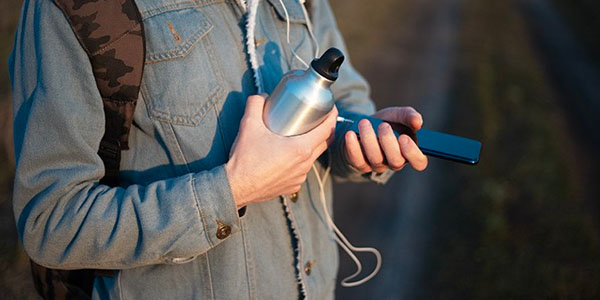
Ways to Save Water in Public Places
12. Carry Drinking Water With You
While many public places have drinking fountains, these tend to waste water as much of it drains back into the fountain. Bringing a bottle with you ensures that your drinking water is not wasted, but rather saved for later. Choose a reusable water bottle to limit plastic waste.
13. Shower as if You’re Paying for The Water
When using a public shower at the gym, pool or beach, follow the same guidelines you would when showering at home. Keep it short and sweet, as if you’re paying for the water. If you plan to visit the beach, you can always use a towel to get the sand off your feet instead of running water.
14. Be Conservative When Washing Your Hands
While you certainly don’t want to cut corners while washing your hands, especially in public places, you can still be aware of how much water you are using. Get your hands wet, then turn off the faucet while lathering up the soap. It’s a simple as taking your hands away from the faucet when scrubbing, and only turning the water back on when rinsing.
15. Report Leaks You See
Keep an eye out for water running where it shouldn’t be. If you see a faucet, fire hydrant or any other feature that is leaking water, report it to the owner of the facility or the department of public works. Leaks like this can quickly waste a lot of water. For example, if you notice the faucet in the bathroom of a restaurant is leaking, let the management know so they can address it. If enough people stay vigilant, a real difference can be made.

“If you see a leak on the street or water leaking from a fire hydrant, report it to your local water provider. These can represent a massive leak and end up wasting a lot of water. Reporting these leaks to the city is a great way for us to do our part in reducing water waste.”
Bill Christiansen | Alliance for Water Efficiency

